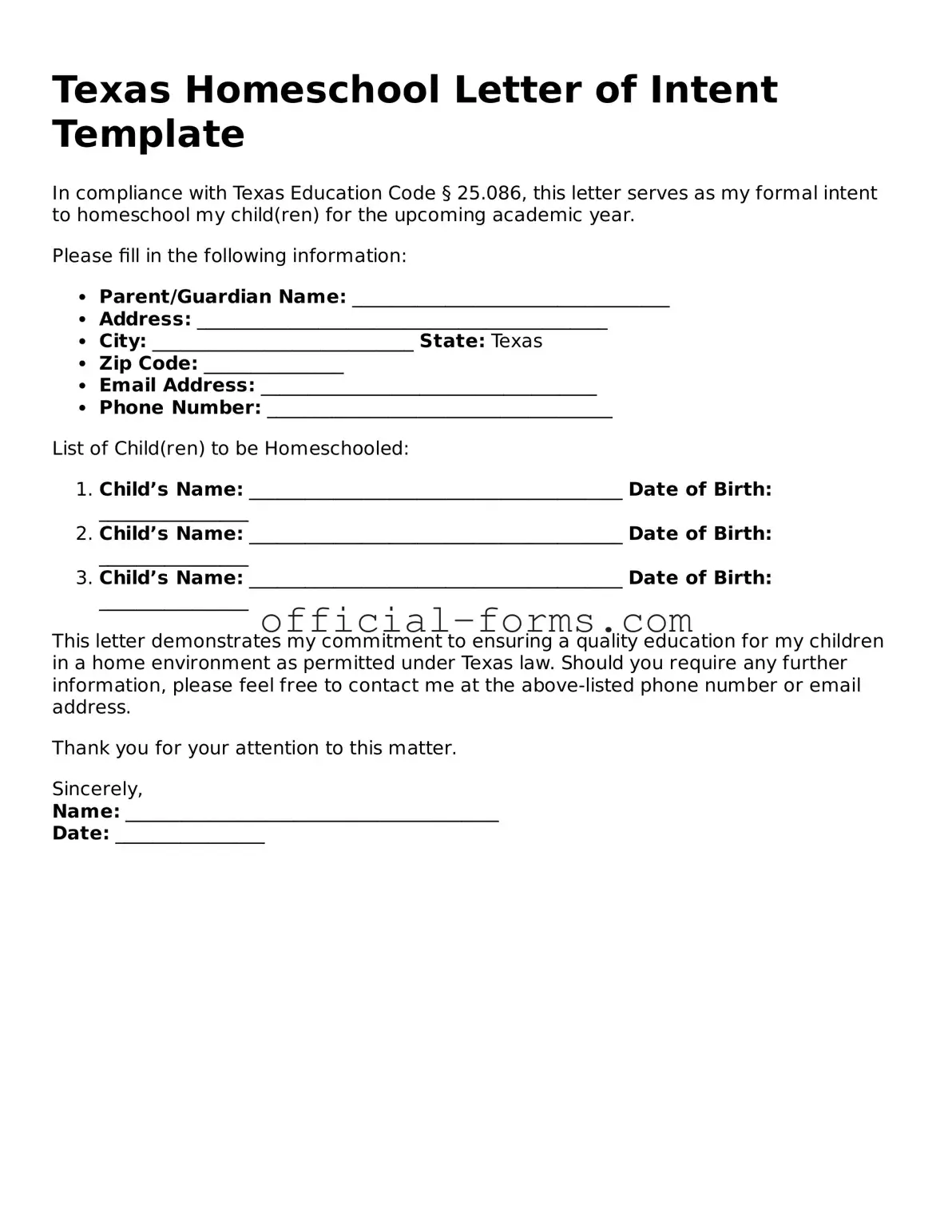Filling out the Texas Homeschool Letter of Intent form can seem straightforward, but many families make common mistakes that can lead to delays or complications. Understanding these pitfalls can help ensure a smoother process.
One frequent error is not providing complete information. Each section of the form requires specific details about the student and the educational plan. Omitting information, even something that seems minor, can result in the form being returned or rejected.
Another mistake involves incorrectly identifying the educational curriculum. The form asks for a description of the curriculum you plan to use. Be clear and specific about the materials and methods you will employ. Vague descriptions may not meet the requirements set by the state.
Some individuals fail to sign and date the form. This step may seem obvious, but it is crucial. A form that is not signed or dated will be considered incomplete. Ensure that all necessary signatures are in place before submission.
Many people also overlook the submission deadline. The Texas Education Agency recommends submitting the Letter of Intent at least 30 days before the start of your homeschool program. Missing this deadline can create complications in your homeschooling journey.
In addition, not keeping a copy of the submitted form is a common oversight. It is important to retain a copy for your records. This can be helpful in case you need to reference it later or if any issues arise with your homeschooling status.
Lastly, some families forget to update their information if there are changes in their homeschooling situation. If you move, change your curriculum, or if there are changes in the student’s status, it is important to inform the appropriate authorities promptly.
By being aware of these common mistakes, families can fill out the Texas Homeschool Letter of Intent form more effectively. Taking the time to review each section carefully can lead to a successful homeschooling experience.
